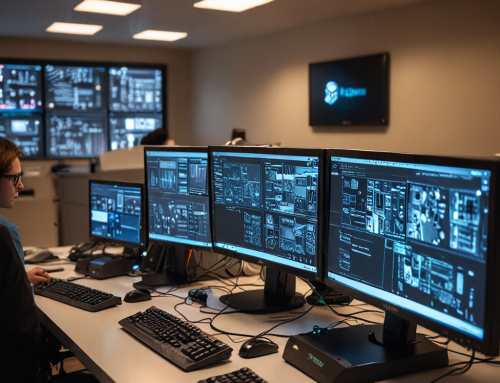The greatest unguarded threat to network security is visible. The data ports and cable connections of data and IT networks offer the easiest, most numerous points of access for data theft, compromise, and infection. And the most numerous human sources of network threat are people who actually work with the network.
Experience and research studies conclude that even the most disciplined associates see data ports and connections as perfectly innocent places to hook up a personal device – even a USB memory stick they might have found on the floor, or in the parking lot. The studies are sobering. The real-world examples of what this casual use can lead to are catastrophic.
What Experts Recommend
Controlling access to the system is basic; the thing to do before, after, and during everything else according to industry reports. The idea is simple: Not everyone should have access to your network. The real world is far more complex and difficult, because without access, no work gets done.
Network access control begins with what you can see: your ports and connectors. They are essential tools, surely, but like any sharp tool, they call for extreme care in handling. Even authorized users can be huge sources of compromise. Just syncing their smartphone, or using a memory stick to take work home, can pass contaminants and malware from anywhere on virtually infinite Web. It’s as simple and innocent as that. If you stop the viruses, ransomware, Trojan horses, worms, and spyware from getting in through visible ports and connections, then a broad sector of your security perimeter is secured, and the software that continually seeks anomalies, and fixes damage, has a better chance to be effective.
Carried on a Cloud
Servers and applications get a lot of the attention that executives devote to cyber security. However, with cloud computing came a virtually infinite expansion in the source of threats. In addition, mobile computing and communicating devices added further dynamic complexity to the threat environment.
The fact that legions of proficient technicians are at work everywhere, doing their best to stay abreast of this existential threat that faces enterprises today, should give us some measure of confidence. But the threats will remain dynamic, a living part of business from this day forward. Oddly, the more resources we devote to addressing it, the more we realize how complex the threat can be.
This is all the more reason to make sure you’re not leaving the front door open, as your specialists and contractors run from window to window looking for threats. The access you must have to operate and populate your IT and data networks includes – and begins with – the ports and connections your people use every day. This is the front door, and it is astonishing how often it is unsecured.










